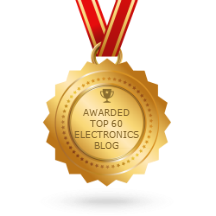 |
| A brushed DC electric motor generating torque from DC power supply by using an internal mechanical commutation. |
Q. 1. How may the direction of rotation of a d.c. motor ?
Q. 2. What will happen if both currents are reversed?
Q. 3. What will happen if the field of a d.c. shunt
Q. 4. What happens if the direction of current at the terminals of a series motor is reversed?
Q. 5. Explain what happens when a d.c. motor a.c. suppl y?
- Since on a.c.
supp lyreactance supply supply run but supply - There would be more sparking at the brushes.
- Though motor armature is laminated as a rule, the field poles are not. Consequently, eddy currents will cause the motor to heat up and eventually burn on a.c.
supply
Q. 6. What will happen if a shunt motor is directly connected to the supply line?
(i) Damage the motor itself and
(ii) Badly affect the voltage regulation of the supply line.
Q. 7. What is the function of interpoles
Q. 8. In rewinding the armature of a d.c. motor are changed
Q. 9. A d.c. motor
- Open-circuit in
controller - Low terminal voltage–should be adjusted to
name-plate value - Overload–should be reduced if
possible otherwise - Excessive friction–bearing lubrication should be checked.
Q. 10. A d.c. motor ?
Motor not getting clups - Weak or no field–in the case of adjustable-speed motors, check if rheostat is correctly set. Also, check field winding for any ‘open’. Additionally, look for any loose winding or broken connection.
- Motor torque insufficient for
driving the
Q. 11. What are the likely causes if a d.c. motor And t he remedy?
- Supply line volta
g e too low –removea ny excessive resistance insupply line connection or controller. - Brushes ahead of
neutra l –set them on neutral. - Overload–reduce it to allowable value or use larger motor.
Q. 12. Why does a d.c. motor sometime run ? Give different possible causes and their remedies.
- Weak field–remove any extra resistance in
shunt field circuit - Line voltage too high–reduce it to
name-plate - Brushes back
of
Q. 13. Under what conditions is sparking produced at the brushes of a d.c. motor ? How would you remedy it?
- Commutator in bad condition–clean and reset brushes.
Commutator either eccentric or rough–grind mica .- Excessive vibration–balance armature. Make sure that brushes ride freely in
holders - Brush-holding spring broken or sluggish–replace
spring recommended value - Motor overloaded–reduce load or install
motor - Short-circuit in armature circuit–remove any metallic particles between commutator
segments and check for short between adjacent commutator risers. Locate and repairinternal armatureshort, if any.
Q. 14. Sometimes a hissing noise (or brush chatter end of a running d.c. motor ?
- Excessive clearance of brush holders–adjust properly
- Incorrect angle of brushes–adjust to correct value
- Unsuitable brushes–replace them
- High mica–undercut it
- Wrong brush spring pressure–adjust to correct value.
Q. 15. What are the possible causes of excessive sparking at brushes in a d.c. motor ?
- Poor brush
fit - Brushes binding in the brush holders–clean holders and brushes and remove any irregularities on surfaces of brush holders or rough spots on brushes.
- Excessive or insufficient pressure on
brushes - Brushes
off
Q. 16. Why does a d.c. motor
Q. 17. When is the armature of a d.c. motor
- When
motor - When it is installed at a place having restricted ventilation.
- When
armature
Q. 18. What causes are responsible for over-heating of commutator in a d.c. motor ?
Related Post:
![]()
















0 Comment(s):
Post a Comment